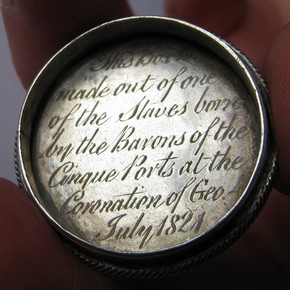V&A Online Journal
Issue No. 2 Autumn 2009
ISSN 2043-667X
A silver-gilt cup commemorating the coronation of James II and the culture of gifts and prerequisites in Stuart and Hanoverian coronations
Deputy Keeper, Department of Sculpture, Metalwork, Ceramics and Glass.
Abstract
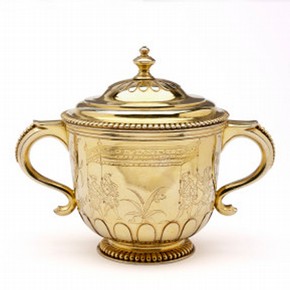
Figure 1 - Cup and Cover, England, about 1685. Silver-gilt, unmarked. Height: 13 cm Weight 16 oz. 1 dwt. Museum no. M. 34-2008
The flat-chased Chinoiserie figures carrying a canopy on the newly acquired James II Coronation Cup demonstrate the original purpose of its recycled silver: they reflect the decoration of canopies carried by barons of the Cinque Ports over the heads of the newly crowned monarch and his consort. This article places the new acquisition in the context of surviving Coronation silver and furnishings in the V&A Collections and elsewhere , including canopy bells and staves, tankards, cups, a punch bowl, a counter box, George II's canopy and George IV's footstool.
The James II Coronation Cup
The Victoria and Albert Museum recently acquired a cup and cover which commemorates the Coronation of James II. (1) This silver-gilt cup and cover was made from recycled silver bells and stave mounts that adorned the canopies carried over James II and Mary of Modena at the Coronation on St George's Day, 23 April 1685. After the ceremony, the silver was shared by the barons of the Cinque Ports (five towns on the South coast) as a perquisite of their role in carrying the canopies over the king and queen in the Coronation procession.
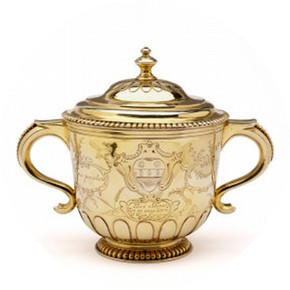
Figure 2 - Cup and cover, Reverse of Figure 1, England, about 1685. Silver-gilt, unmarked. Height: 13 cm Weight 16 oz. 1 dwt. Museum no. M. 34-2008
Two of the barons, members of the same family, Cresheld and Gawden Draper, combined their share - probably one stave mount and one bell - which were melted down to make this commemorative cup and cover. As the combined weights of one mount and one bell were just under 36 ounces, and the cup and cover weighs just over 16 ounces, it is possible that two cups were made, one for each member of the family who attended the coronation. However, only one is known today.
The cup stands on a cast circular gadrooned foot. The lower part of the body is applied with cut card work. The cylindrical bowl has a moulded lip and the body is flat-chased with four Chinoiserie figures carrying a canopy, with a fruit tree on either side (fig. 1). The opposite side (fig. 2 ) is engraved with an escutcheon of arms 'or, on a fesse between three annulets gules as many covered cups'.
The arms are flanked by two engraved cartouches, one inscribed 'Tria pocula'; the other 'Fero' (this Latin motto translates as 'I bear three cups'); the spaces between are engraved with branches and a bird sitting on a bough in the Chinese taste. A panel below the coat of arms contains the inscription, 'Hoc obtinui | Ex in aug: Iac: 2.d | Et Mar: Ap: 23. 85'. (I obtained this from the Coronation of James II and Mary, April 23 [1685].) The coat of arms represents the Draper family of Winchelsea. Cresheld Draper was amongst those supporting King James II's canopy and Gawden Draper (probably Cresheld's son) supported the canopy held over Queen Mary of Modena. (2)

Figure 3 - Monteith Racing Trophy by Robert Cooper, London, England, 1688-9. Silver, height 22.9 cm. Museum no. M.25-2002
Although the cup and cover are typical for the form at this date, and the armorials and inscription are standard for the 1680s, the 'Chinoiserie' flat chased decoration of figures supporting the canopy is of particular significance. Further research may demonstrate that the canopies used at James II's Coronation were of 'cloth of gold' woven in China. Increased interest in Chinoiserie was inspired by the publication of recent travels in China by Johannes Nieuhof (1618-1672). His account of 'An Embassy from the East-India Company of the United Province, to the Grand Tartar Cham, Emperour of China 1665' , was first translated into English in 1669. (3)
The fashion for Chinoiserie decoration on contemporary silver extended to toilet services and vessels used in the service of wine. The toilet service from Sizergh Castle, circa 1680, and the Basingstoke monteith racing trophy (1688/9), used for serving punch and chilling wine glasses (fig. 3 ), are both chased with Chinoiserie and displayed in the V&A's Whiteley Silver Galleries. (4)
The taste for Chinoiserie reflects the growing importance of European trade with China following the foundation of the London-based East India Company in 1600. By the 1670s the establishment of a trading base off Fujian resulted in large-scale shipments to England of admired Chinese goods. Such trade fostered a European market for furniture japanned in imitation of true oriental lacquer. Bed hangings and curtains of imported Chinese silk damasks created appropriate settings for such exotic possessions. By 1688, John Stalker's & William Parker's 'A Treatise of Japaning and Varnishing' was published to appeal to the growing taste for professional and amateur japanning. It was appropriately dedicated to Mary, Countess of Derby, Lady of the Bedchamber to the new Queen Mary II, daughter of James II and his first wife Anne Hyde. Chinoiserie was an appropriately exotic visual language for furnishings associated with the monarch. (5)
The Jewel House Delivery Book records the delivery of the silver ornaments for the canopies. (6) Three days before the Coronation, Sir Benjamin Bathurst received 'Twelve Large Canopy staves, crowned with silver 6 for his Majties & 6 for her Majties Canopy', weighing in all 369 ounces and 10 penny weights. Bathurst also received '8 gilt Bells' for 'each Canopy' with a combined weight of 61 ounces and 15 penny weights.
From the coronation of Richard I to George IV, canopies were carried over the monarch by the Barons of the Cinque Ports as a symbol of the role that they played in defending king and country. (7) The ports of Dover, Hastings, Hythe, Romney, Sandwich, and later Winchelsea, were granted privileges by the monarch in exchange for supplying ships and men to protect England's vulnerable southern coastline. They enjoyed the title of Baron for the day of the Coronation only. Their presence ensured that leading citizens from the regions were represented on such national occasions, to balance the presence of the Lord Mayor and aldermen of the City of London and the aristocracy who were always well represented at such historic events. After the ceremony the barons were entitled to claim the canopies of cloth of gold, and the silver bells and staves as a perquisite of their role in the procession. They were also invited to dine at the table to the right of the king and queen at the Coronation Banquet in Westminster Hall. The division of the perquisites was not always peaceful; at the Coronation of Charles II in 1661, the royal footmen tried to tear the canopy and its bells from the barons during the Coronation feast and dragged the barons away from their seats in Westminster Hall. The canopy had always been the perquisite of the barons, and Charles II dismissed the footmen who were subsequently imprisoned. (8)
Other recorded examples of silver recycled from coronation bells and stave mounts include a tankard made for the senior baron Tobias Cleve, who represented Sandwich after the Coronation of Charles II (now in the collection of the Worshipful Company of Goldsmiths, London); and a punch bowl and ladle by London goldsmiths George Boothby and William Fordham, made following George II's Coronation, belonging to the Corporation of Hastings. (9) The tankard is inscribed, 'This Pott was made of ye Silver of ye Canopie when King Charles ye 2d was Crowned, Aprill 23d 1661'. The Hastings punch bowl is inscribed as follows:
This Silver Bowl was presented to the Corporation of Hasting (ye premier Cinque Port.) by ye Gentlemen whose Names are hereon Inscribed who had ye Honour to be unanimously Elected ye Barons of ye said Town to support ye Canopy over their sacred Royall Majesties King George ye 2nd and Queen Caroline at ye Solemnity of their Inauguration at Westminster the Eleventh day of October 1727. And ye same was made out of their Shares and dividend of the Silver Staves &c belonging to the said Canopy. (10)
Recycled silver from George III's coronation was allegedly refashioned as a chandelier for St Clement's Church, Hastings (this no longer survives) and a basket (present whereabouts unknown). (11)
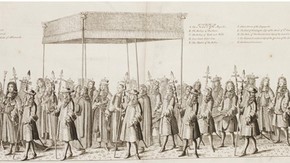
Figure 4 - Engraving Showing the Canopy Held Over James II from Francis Sandford, The History of the Coronation of James II, London, 1687. V&A: National Art Library
Francis Sandford (1630-1694), Lancaster Herald, was appointed by James II to publish an illustrated account of his coronation. 'The history of the coronation of the most high, most mighty, and most excellent monarch James II, etc., and of his Royal Consort Queen Mary: solemnized at Westminster, 23 April 1685: with an exact account of the several preparations, their majesties most splendid processions, and magnificent feast at Westminster Hall' , was published in 1687 with engravings by S. Moore of the procession. These show the canopies held over the King (fig. 4) and Queen (fig. 5 ), supported by the Barons of the Cinque Ports. (12)
Each figure in the procession was drawn from life. The barons were dressed in doublets of crimson satin, scarlet hose, scarlet gowns lined with crimson satin, black velvet caps fastened on their sleeves, and black velvet shoes. James II presented Sandford with a cup and cover in recognition of his role in recording the coronation for posterity. (13)
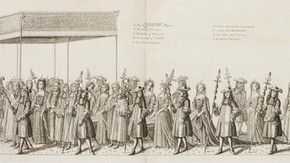
Figure 5 - Engraving Showing the Canopy Held Over Mary of Modena from Francis Sandford, The History of the coronation of James II, London, 1687. V&A: National Art Library
The key to the illustration reads:
A. The King's Majesties
B. The Bishop of Durham
C. The Bishop of Bath and Wells
D. The Four Earls eldest sons
E. The Master of the Robes
F. Sixteen Barons of the Cinque Ports
G. The Earl of Huntingdon Capt. Of the Band of Gt. Pensioners
H. The Duke of Northumberland Capt of the Guard in Waiting.
I. The Viscount Grandison, Capt. Of the Yeoman of the Guard
K. Gentleman Pensioners
The caption to the engraving in Sandford's publication reads, 'A canopy of Cloth of Gold, like that of the Kings, to be born over the QUEEN by Eight Barons of the Cinque-Ports with Four Silver Bells gilt hanging at the Corners. It was born by 16 Barons of the Cinque Ports there being 32 in all'.
The key to the illustration reads:
A. The Queen's Majesties
B. The Bishop of London
C. The Bishop of Winchester
D. The Dutchess [sic] of Norfolk
E. Four Earls Daughters
F. Sixteen Barons of the Cinque Ports
G. A Lady of the Bedchamber
H. Two of her Majesties women.
I. Gentleman Pensioners
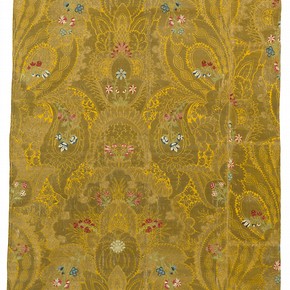
Figure 6 - Canopy, Spitalfields, London, England, 1727. Brocaded satin wtih patterning wefts of silver-gilt thread. 131.7 x 94,4cm. Museum no. T.184-1975
There are other souvenirs from British coronations in the V&A Collections. In 1975 the museum acquired part of the canopy of Spitalfields silk which was carried over King George II at his Coronation in 1727 (fig. 6 ). The rich gold brocade, with lining of silver tabby and border of white lustring, was supplied by the textile dealer George Binckes, whose shop was in Covent Garden. (14)
Currently displayed in the British Galleries, this rich fabric with its metallic colours was adorned by four silver-gilt bells suspended from the corners, supplied by London goldsmith Francis Garthorne for George I's Coronation in 1713-1714. One of these bells, originally used for the Coronation of George I in 1714, was bequeathed to the museum by Sarah, Countess of Waldegrave, in 1873, along with two further silver bells which adorned the canopies held over King George III (1761-2) and King George IV (1825). (15) These are displayed in the V&A's Whiteley Silver Galleries. Two further bells associated with the coronations of Charles I and Charles II are recorded in private collections. (16) The Hastings Museum has a silver stave mount from the Coronation of George IV marked by the London goldsmiths Thomas and James Phipps, 1820-1. (17)
Whilst writing this article, a silver counter box inscribed, 'This box is made out of one of the Staves born by the Barons of the Cinque Ports at the Coronation of Geo.4 July 1821', was brought in to the V&A (fig. 7) (fig.7 part 2 ). The lid is appropriately engraved with a royal crown. (18)
As a result of articles published in 'The Guardian' and 'The Daily Telegraph' announcing the acquisition of the James II Coronation cup, a further bell from the Coronation of George II came to light in a private British collection. (19) This was acquired as a perquisite by the Hon. George Berkeley (1693?-1746), a baron of the Cinque Ports and MP for Dover from 1720. He gave it in turn to his sister Lady Elizabeth Germain (1680-1769).
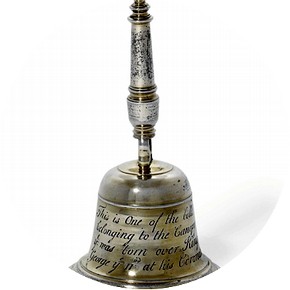
Figure 8 - Bell by Francis Garthorne, London, about 1727. Silver-gilt, height 13.2 cm. Courtesy of Christie's.
These perquisites should be distinguished from the gifts given to officials by successive monarchs in gratitude for services rendered at coronations. (22) In 1665, Charles II gave Sir Sampson White, Mayor of Oxford in 1661 and 1665, a cup and cover in recognition of his services (presenting the sovereign with a silver-gilt bowl of wine) at his coronation. This belongs to the Corporation of Oxford. (23)
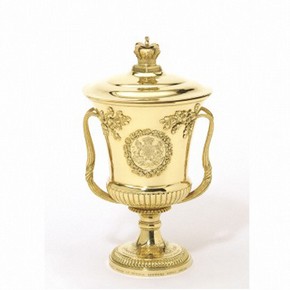
Figure 9 - Cup and Cover, Rundell, Bridge and Rundell, London, 1821-2. Gold, height 22.5 cm. Museum no. M.42-1982
In 1982 the V&A acquired a gold cup and cover, one of four presented by George IV at the time of his Coronation (fig. 9 ). The V&A's cup, supplied by Rundell, Bridge and Rundell for £230 16s 6d, was given to James Butler, 19th Earl of Ormonde (1774-1838), who served as Chief Butler of Ireland in succession to the Earls of Arundel, who officiated as successive Chief Butlers of England from 1243 to 1821.
The chair and footstool covered with purple velvet used by Archbishop Juxon at the Coronation of Charles II, and given to the Archbishop after that Coronation, came to the V&A in 1928 and are currently displayed in the British Galleries. (24)
In 1991 the V&A acquired at auction the footstool made for the king's use at the Coronation of George IV (on long term loan to the Westminster Abbey Undercroft Museum). (25) The James II Coronation cup and cover formerly belonged to J. Pierpont Morgan, an outstanding collector of paintings, manuscripts and decorative arts; (26) the V&A already has a number of pieces previously owned by him.
The earliest piece of silver in Morgan's collection was the small silver drinking bowl (1525-6) now in the Gilbert Collection, and displayed in the V&A's new Rosalinde and Arthur Gilbert Galleries. (27) In 1919 the V&A acquired an important collection of stained glass from J.P. Morgan's son. Examples are displayed in the V&A's Sacred Silver and Stained Glass Galleries. (28)
Although the James II Coronation Cup is currently displayed in the V&A's New Acquisitions Gallery it will return to the Whiteley Silver Galleries for display with the coronation bells in 2010. It is hoped that in due course, a small touring exhibition of Coronation silver may be arranged, including this exciting new acquisition, to be shown in museums in the Cinque Ports of Dover, Hastings and Sandwich.
Endnotes
(1) This was purchased from Koopman Rare Art. It was sold by Sotheby's New York 19 April 1991, lot 327. It belonged to J. Pierpont Morgan by 1908. The cup was purchased with assistance of the Art Fund, the National Heritage Memorial Fund, the Hugh Phillips Bequest to the V&A, the Friends of the V&A, the Worshipful Company of Goldsmiths and an anonymous donor. See Art Fund 2008/2009 Review: 106.
(2) The International Genealogical Index. Cresheld Draper (d.1693) originally from Crayford, Kent was MP for Winchelsea from 1678 to 1687. He married Sarah Gauden of Clapham, Surrey, in 1665. She was the daughter of Sir Dennis Gauden of Mayland, Essex.
(3) V&A: National Art Library Press Mark 5.X.37
(4) M.21-1968
(5) For recent studies on Chinoiserie see Jackson Anna and Amin Jaffer. Encounters: the meeting of Asia and Europe 1500-1800. London, 2004; Beevers David, ed. Chinese Whispers:chinoiserie in Britain. Brighton, 2008. A group of silver decorated with chinoiserie motifs dating from the 1680s is studied by Carl Christian Dauterman in 'Dream-Pictures of Cathay: Chinoiserie on Restoration Silver'. Metropolitan Museum of Art Bulletin 23 (Summer 1964): 11-25. Philippa Glanville noted that the chasing technique uses a stabbed line, perhaps influenced by a common printed source. Silver in England. London and New York, 1987: 234 and 'English Seventeenth-Century Chinoiserie Silver' in New York, Sotheby's, 'The Jaime Ortiz-Patiño Collection: English Seventeenth-Century Chinoiserie Silver', 21 May 1992. For a summary of the discussion on methods of Chinoiserie decoration on 1680s silver see Wees, Beth Carver. English Irish & Scottish Silver at the Sterling and Francine Clark Art Institute. New York, 1997: 73.
(6) TNA / Public Record Office, London LC9/43.
(7) Strong, Roy. Coronation From the 8th to the 21st Century. London, 2005: 103.
(8) Strong, Roy. Coronation From the 8th to the 21st Century. London, 2005: 350.
(9) Perry, Edward. Gift Plate from Westminster Hall Coronation Banquets. Apollo. Double Coronation Number, LVII, no.340, (1953): 198-200.
(10) Baines, J. Manwaring. 'The Cinque Ports and Coronation Services'. Hastings Museum Publication, No.18, 3rd edition, 1968.
(11)Baines, J. Manwaring. 'The Cinque Ports and Coronation Services'. Hastings Museum Publication, No.18, 3rd edition, 1968: 11. The information on the cake basket was provided by Charles Truman.
(12) V&A: National Art Library, press mark RC. LL. 21
(13) Now in the collection of the Worshipful Company of Goldsmiths
(14) This bears an inscription attached to the selvedge which reads 'June the 11th 1727 Part of the Canopy held over George II head by one of the free Barons of Sandwich, at his Coronation. The other half is in the possession of Mr. Baker the late member for Canterbury who was likewise one of the Bearers - woven in Spitalfields.'
(15) V&A: 494,495,496-1873. These are illustrated in Clayton, Michael. The Collector's Dictionary of the Silver and Gold of Great Britain and North America. London, 1971: 27, fig.33 a,c,d. An identical bell to Clayton’s fig. 33c is lot 169 in Sotheby’s New Bond Street 18 November 2009 sale.
(16) Butler, Robin. The Albert Collection. London, 2004: no.374.
(17) Butler, Robin. The Albert Collection. London, 2004: no.374. Baines, J. Manwaring. 'The Cinque Ports and Coronation Services'. Hastings Museum Publication, No.18, 3rd edition, 1968: 12. The stave mount is an inch in diameter and 3 ft 8 in long.
(18) Private Collection. The box is 3.5 cm. high, 2.9 cm. in diameter.
(19) This bell is also illustrated in Clayton, Michael. The Collector's Dictionary of the Silver and Gold of Great Britain and North America. London, 1971: 27, fig.33b.
(20) I am grateful to Harry Williams-Bulkeley for bringing this to my attention. Marked by Francis Garthorne, it was subsequently in the Mulliner Collection and the Percival Davis Griffiths Collection and shown in the Park Lane Exhibition, 1929, no.55. It will be auctioned in London, by Christie's, on 20 November 2009 (lot 40)
(21) The full title is A sermon preached before their majesties K[ing ] James II and Q[ueen] Mary at their Coronation in Westminster Abbey, April 23 1685, London, Robert Clavell . This was presented by Mr O.S.Vickers and is in the V&A: National Art Library, press mark 802.AK Box II (5)
(22) For Coronation silver given to the Earls and subsequently Dukes of Ancaster, who served as successive Lord Great Chamberlain; to the Marquess of Exeter, Lord High Almoner at the Coronation of James II; to the Dukes of Norfolk in their role as Earl Marshal and Hereditary Marshal of England see Jones, E. Alfred. 'Some Coronation Plate'. The Burlington Magazine 70, no.410 (May, 1937): 240-247.
(23) Perry, 'Gift Plate from Westminster Hall Coronation Banquets'. Apollo (1953): 198.
(24) V&A: W.12 & 13-1928. Wilk Christopher, ed. Western Furniture 1350 to the Present Day. London, 1996: 68.
(25) V&A:W.7-1991. The footstool is of beech, stained and gilded with cover of red silk velvet trimmed with meal thread fringe; supplied by Bailey and Saunders for the Coronation of King George IV, British, 1821
(26) Jones, E. Alfred. Illustrated Catalogue of the Collection of Old Plate of J.Pierpont Morgan. London, 1908: pl.LXXIX, 33.
(27) V&A: LOAN: Gilbert 577-2008
(28) Williamson, Paul. Medieval and Renaissance Stained Glass in the Victoria and Albert Museum. London, 2003: figs.11-12.
Issue No. 2 Autumn 2009
- Editorial
- Computer art at the V&A
- News from the past: Oral history at the V&A
- Tales from the 'Coilte'
- Tea Parties at the Museum - The collector J H Fitzhenry and his relationship with the V&A
- Manchu horse-hoof shoes: Footwear and cultural identity
- A silver-gilt cup commemorating the coronation of James II and the culture of gifts and prerequisites in Stuart and Hanoverian coronations
- Filling a Gap: Recent acquisitions of turned wood at the V&A
- Review: The Children's Book by A S Byatt
